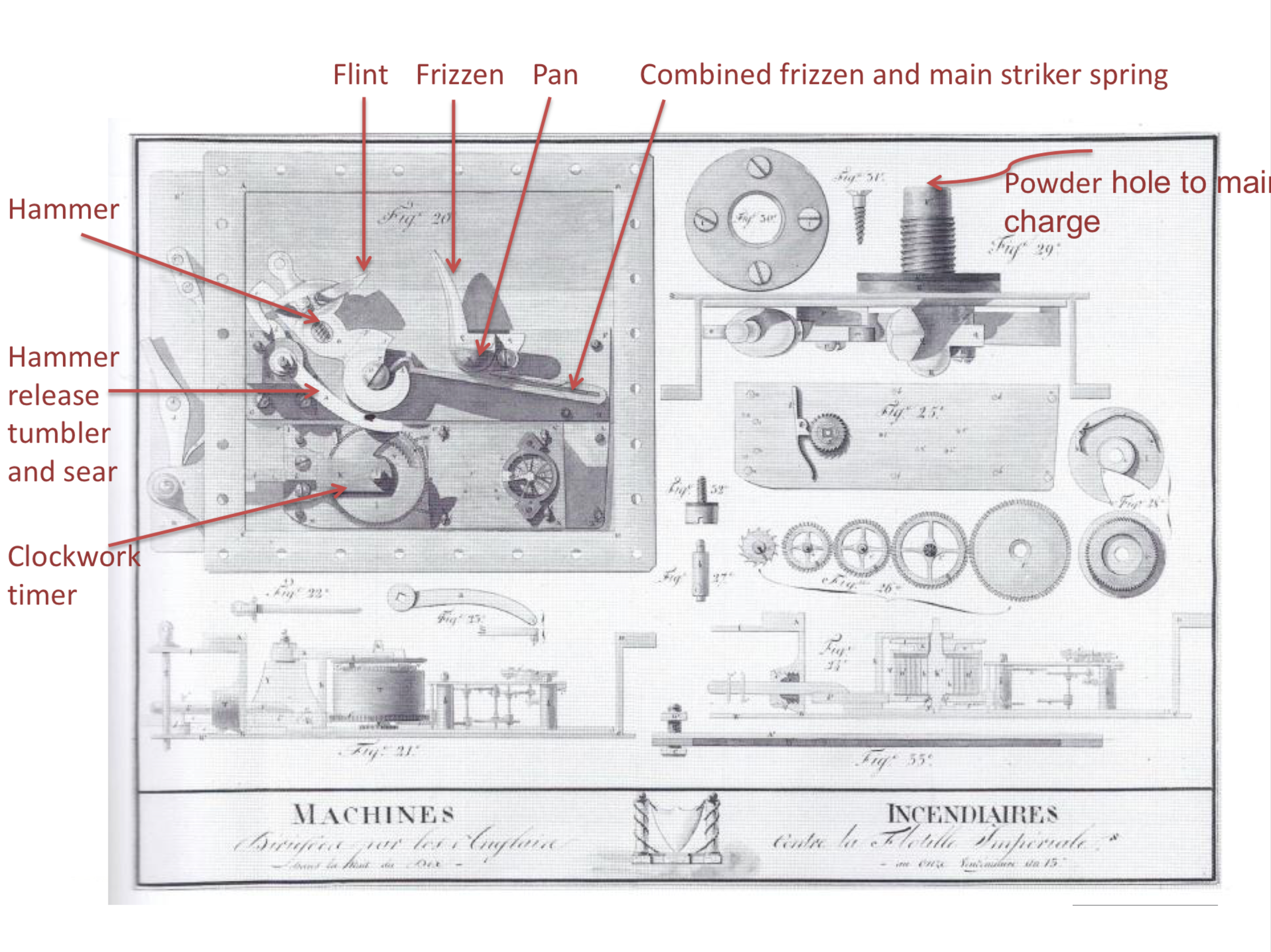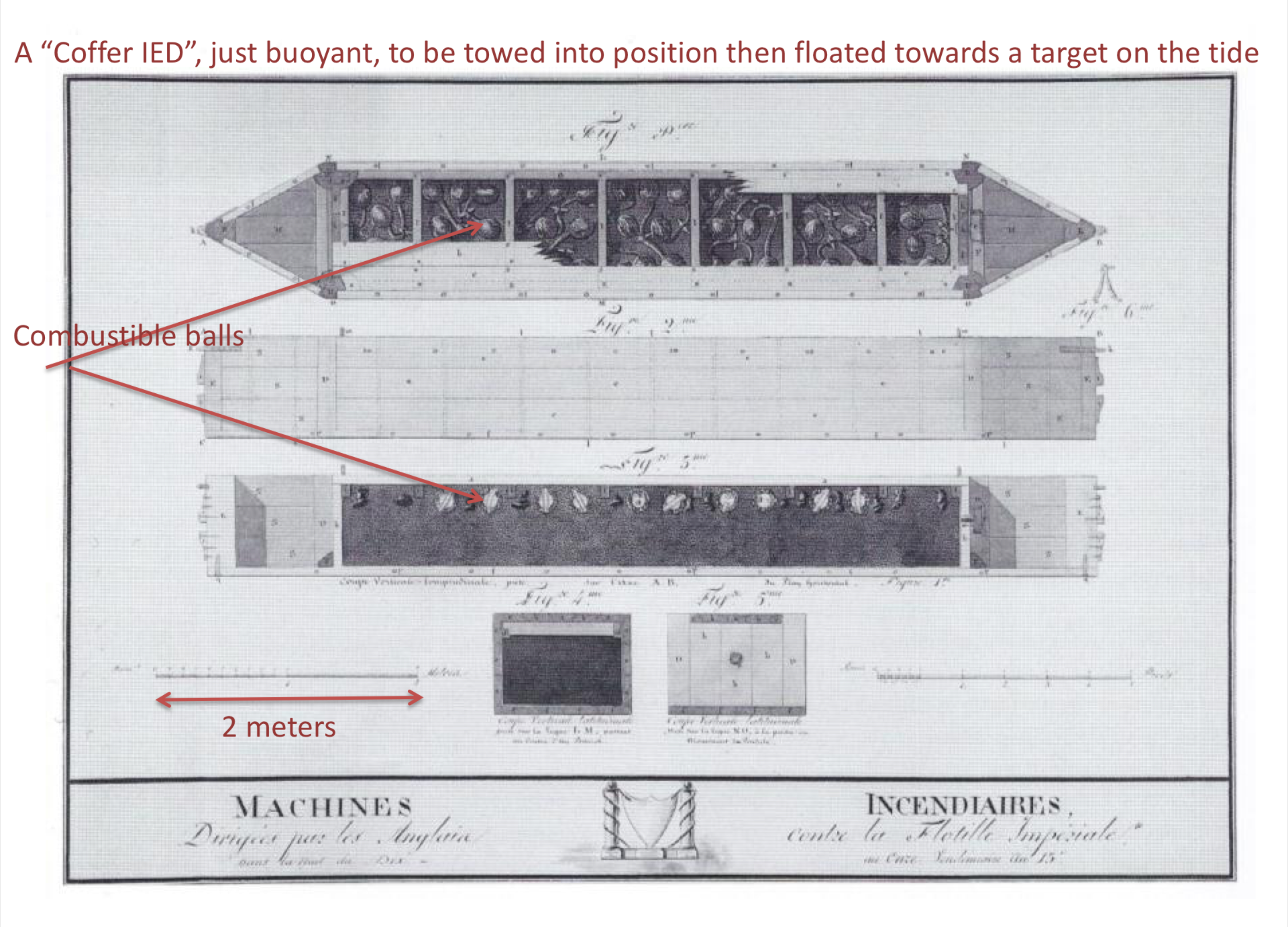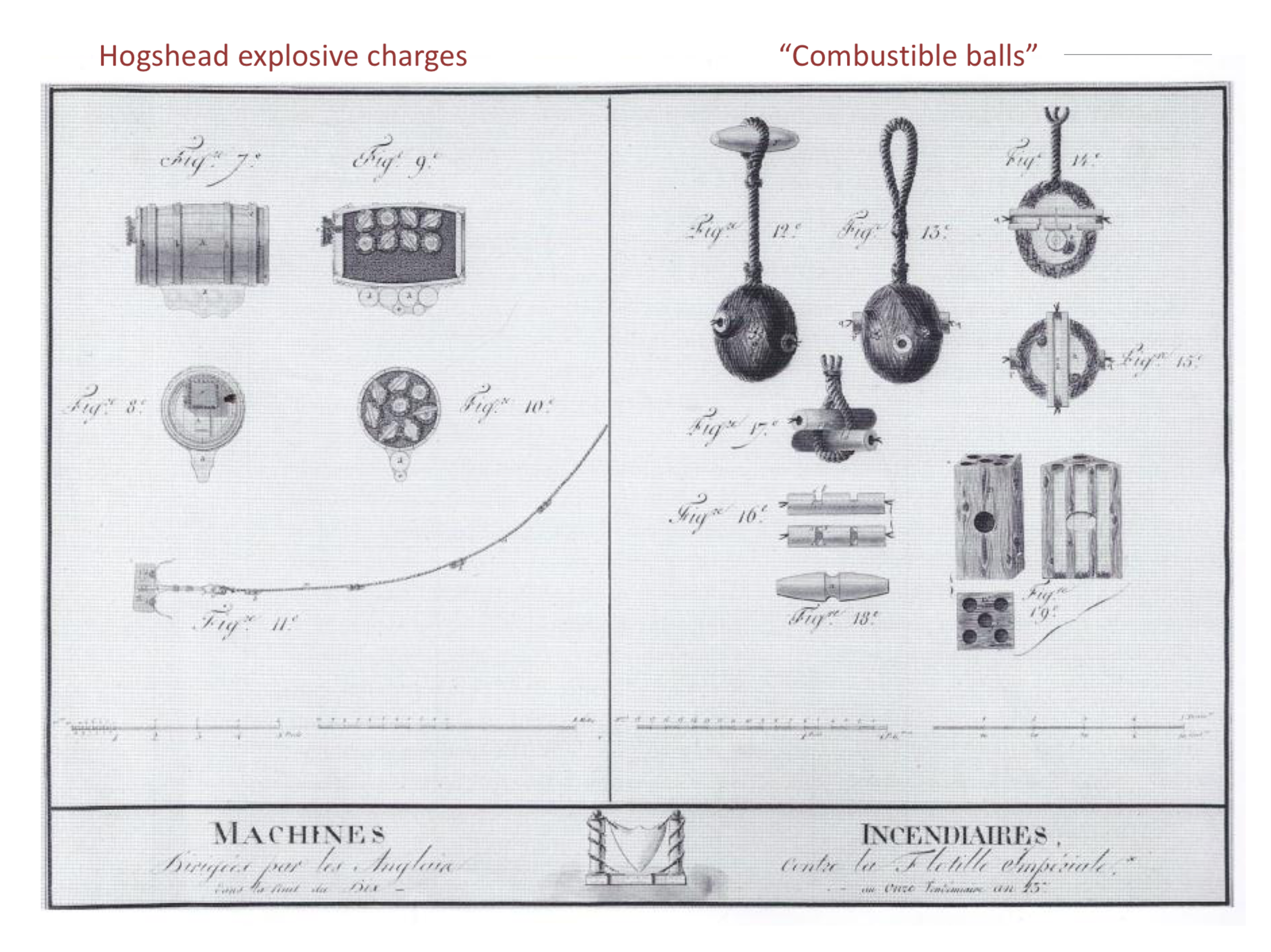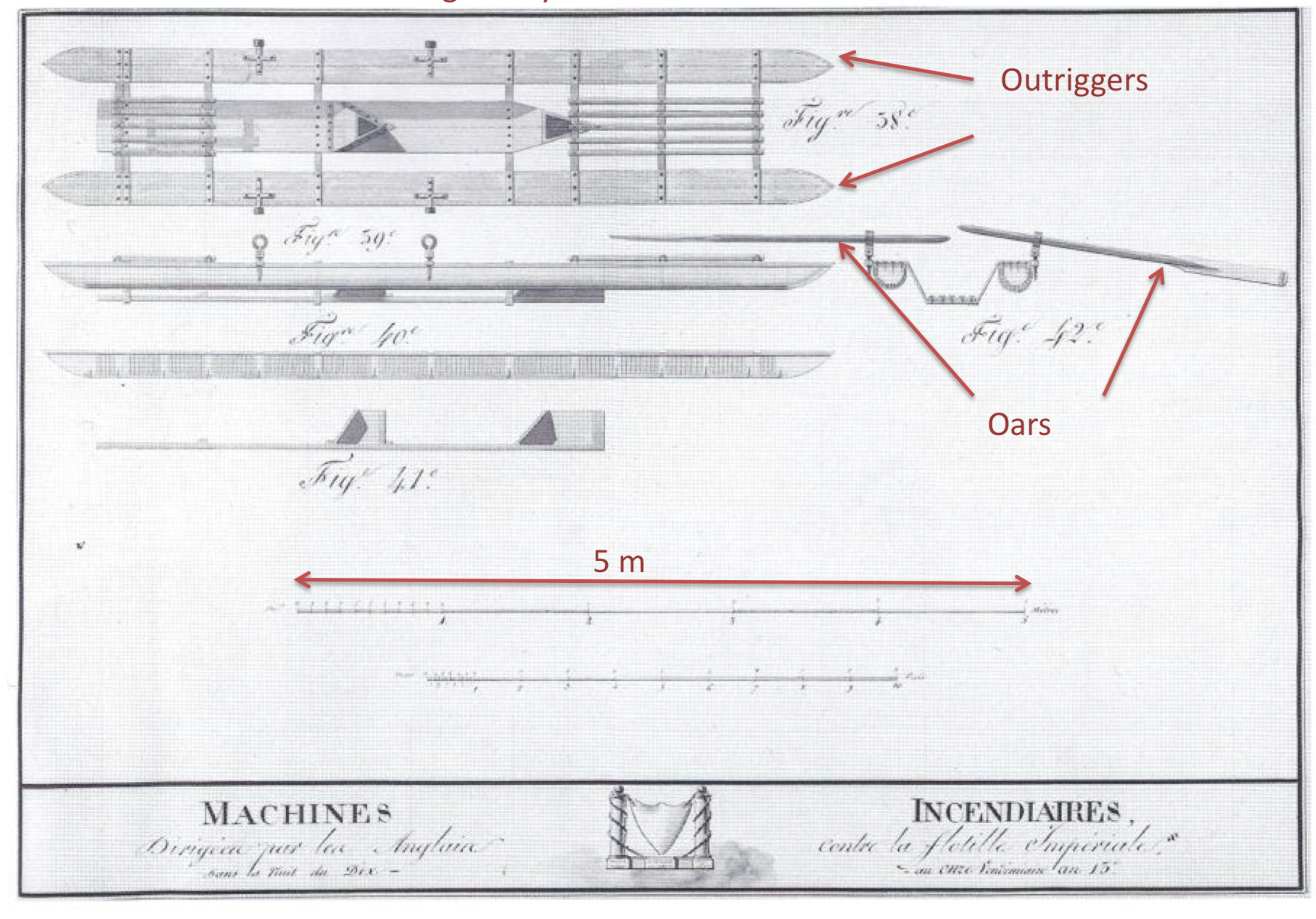Given recent explosive attacks in the Gulf, it’s worth remembering that stealthy attacks on maritime vessels with explosive devices isn’t exactly new. In 1804 and 1805 Robert Fulton designed some IEDs for the British Navy. Fulton was something of a peripatetic bomb maker and inventor – making devices for the French, for the British and then for his home nation the USA. In 1805, his devices were used in a small number of British attacks against the French in the Channel ports. Most of these attacks were failures or had limited effect. However the French authorities recovered the devices, and examined them in detail. So this is a lovely early example of Technical Intelligence and Weapons Technical intelligence regarding IEDs. The French artist was fantastic and his diagrams of the devices have survived. Frankly they put many modern IED intelligence reports to shame. Here are the diagrams with some annotations (in red) by me.
The first diagram is a clockwork timer initiation device, used to detonate a floating explosive charge. The clockwork timer is connected to an adapted firearm lock, a flintlock in this case. You should recognise the flintlock mechanism in the device below:
 This clockwork initiation mechanism was attached to a main explosive charge. The main charge was a large sealed canoe shaped pontoon, described as a coffer. Two of these were attached to make a barely buoyant twin raft with a rowing position in the middle.
This clockwork initiation mechanism was attached to a main explosive charge. The main charge was a large sealed canoe shaped pontoon, described as a coffer. Two of these were attached to make a barely buoyant twin raft with a rowing position in the middle.
Here’s the charge:

The coffer was filled with gunpowder and also, in effect, sub-munitions, described as “combustible balls” and other, larger “hogshead” explosive charges were , I think towed behind, but the initiation mechanism for these hogsheads I can’t quite make head or tail of.
Finally here
Finally, here’s a diagram of the “catamaran”. It was rowed into place not far from the French Imperial Fleet. The rowers then pulled a lever to start the timer, slipped into the water and swam to accompanying boats. The tide then took the just-floating catamarans (I think there were at least two) towards the anchored fleet, with the barrels designed to foul the ships and swing the larger charges alongside the ship. As you can see they were pretty large contrivances.

So… Here we have, 214 years ago, a stealthy IED attack on French Navy vessels, by the British, designed by an American, and with a superb Technical Intelligence report on the failed devices by the French. This stuff ain’t new. I hope to have more (new) detail on Fulton’s explosive device design in coming months.
